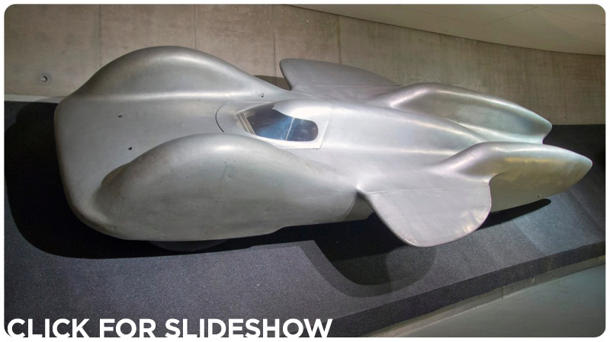Karl Benz and Gottlieb Daimler never really knew each other. The two lived 60 miles apart and had divergent goals for their start-up engine businesses; Benz wanted a new type of vehicle while Daimler and designer Wilhelm Maybach were engine guys, happy to put gasoline power to a horse carriage in order to get rid of the horse.
But the company that emerged from their work lays claim to a heritage that stretches back to the first-ever gasoline-powered automobile – the three-wheeled Benz Patent Motorwagen – in 1886. And to mark that heritage, Mercedes-Benz has what many consider the world's best auto museum, located on park-like grounds near a Mercedes-Benz engine plant and just down the street from Mercedes-Benz Stadium in the company’s hometown of Stuttgart, Germany.
A tour of the museum not only tells the story of Benz and Daimler, but through 160 vehicles and more than 1,500 exhibits, visitors enjoy a world history lesson of the past 125 years, and the role in which the automobile has played in helping shape that history.
Upon entrance into the museum visitors are transported via elevator up nine levels where the tour begins to the sound of horses clopping on cobblestones, typical of the world in the late 1880s. It is there you see Benz and Daimler’s first creations, the Patent Motorwagen and the 1886 Daimler Motorcoach. You also see the world’s first motorcycle built a year before the first car, used to test engines, and a boat and odd-looking airplane. The Mercedes-Benz three-pointed star emblem stood for Land, Sea and Air; through the years, the company produced engines for all three.
Spiraling down through the museum, visitors pass through seven “Legends” rooms that detail the history of the brand with such legendary vehicles as the 1928 SSK as well as the 1955 300 SL Coupe, also known as the Gullwing. And there are five separate “collection” rooms that show the various types of vehicles produced, from race transporters to the 1980 G 230 “Popemobile." Another level puts the company in its cultural context, including an unstinting reminder of its role in World War II and Hitler's regime.

Because of Mercedes-Benz rich history in racing, the museum finishes on a banked curve -- Silver Arrows-Races and Records -- where historic racecars are poised along with displays of racing memorabilia and trophies, and sounds of Mercedes-Benz racecars scream through loudspeakers. A couple of favorites: The 1955 300 SLR No. 722 that Stirling Moss drove to victory in the 1955 Mille Miglia, the famous Italian road race. And an audacious-looking streamliner, the 1939 T80, designed by Ferdinand Porsche, another prominent car builder who eventually set up shop in Stuttgart. Hitler himself had pushed Mercedes to set the world's land speed record, and Porsche believed the T80 — powered by a 3,000-hp V-12 — could have hit 465 mph, but the planned run was cancelled at the outbreak of World War II.
The Mercedes-Benz museum also makes for a launching pad to explore the rest of German auto history. Just a few miles from the Mercedes-Benz museum is Porsche’s, and it might be the second-best car museum in the world, highlighting the company’s rich racing heritage. Other German manufacturers -- Audi in Ingolstadt, BMW in Munich and Volkswagen in Wolfsburg -- also have outstanding museums detailing each company’s unique history.
The Mercedes-Benz museum is closed Mondays. For more information, contact: classic@daimler.com
Source: Yahoo!

No comments:
Post a Comment